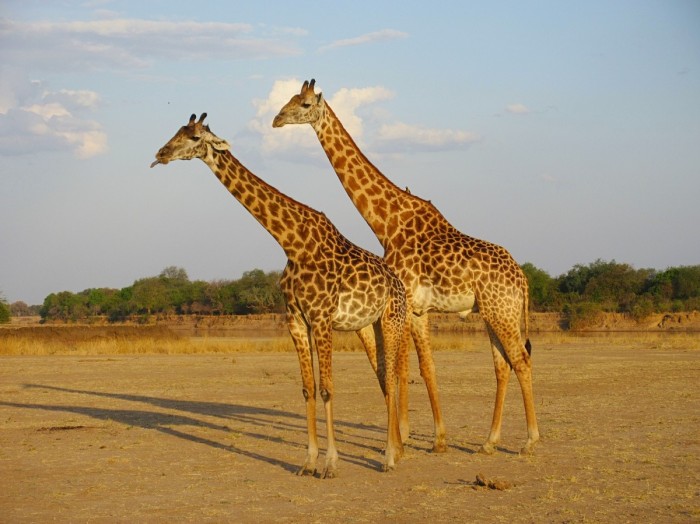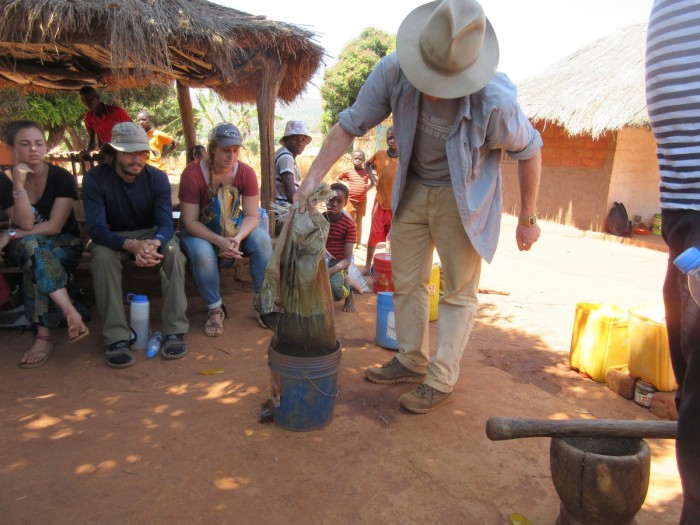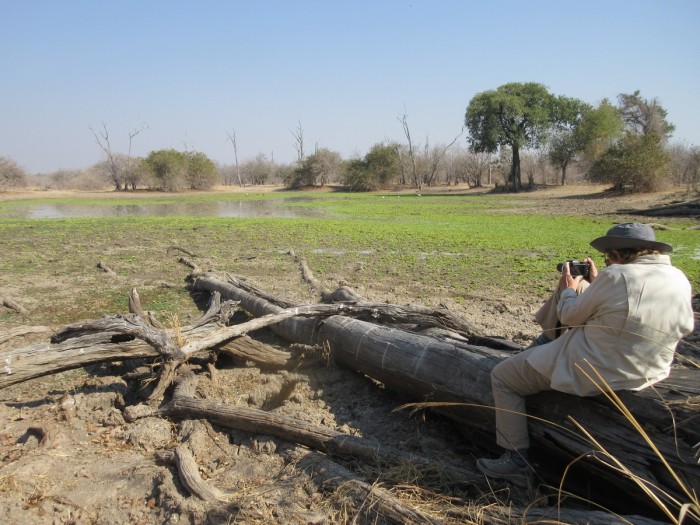
The lions are by the big tree in the middle background which is like crazy.
Reading this week:
- Capital in the Twenty-First Century by Thomas Piketty (wow it’s good)
- The Last Train to Zona Verde by Paul Theroux
- Zen in the Art of Archery by Eugen Herrigel
So, hot on the heels of going to North Luangwa National Park, I went to South Luangwa National Park. It feels good to have completed the Luangwa National Park set. This trip was a vacation with my girlfriend, along with some friends of ours. It was a very cozy little trip.

The very scenic Luangwa River.
South Luangwa National Park is technically in Northern Province, but you access it via Eastern Province, near Chipata. The river forms the southern border of Northern Province, and most of the camps it seems are on the southern bank of the Luangwa river, in the “game management area.” That means it isn’t in the park, but there are no fences so the animals can wander around freely.

Lily in our sweet safari tent.
And lemme tell ya, there area a lot of animals. Having been on a safari or two at this point, South Luangwa seems like there were by far the most animals. Chobe had a lot of animals, and I guess the big difference is that we didn’t stay in or near the park, but the entire time we were at the lodge even we were surrounded by animals. There were velvet monkeys and baboons roaming the lodge throughout the day, and at night hippos would come up on the bank right next to our tent to munch on the grass (it’s nice grass because the lodge keeps it watered). The first day we were there a small family of elephants came right up below the embankment to munch on trees about 10 feet from our tent. So I guess if you want animals go to South Luangwa.

Family of elephants coming over to hang out.
We spent two full days just lounging around at the camp enjoying the scenery and the quiet and the pool. One of the days we went on the “package” though. At this lodge, that includes meals and two game drives. The game drives were pretty phenomenal. The park was packed with animals and we saw a whole bunch. There were, of course, your classic impala and warthogs and the like (lots of bushbuck too, which were pretty unusual in the other places I’ve been). There were several herds of elephants, including some really young little babies that were running around and being cute and stuff.

It’s hard to hide if you’re a giraffe.
My favorite animal to see on safari is of course giraffes, just because they are so big and gangly and crazy looking. We ran across one small family of about four, and then another big herd with 10 or so. We got up pretty close and watched the birds peck at the bugs in their fur and watched the giraffes munch on trees.

The highlights of the park though were of course the big cats. We were very lucky this trip. The local pride of lions, lead by two 10-year-old males named Ginger and Pepper, had been hanging out near the camps and the guides knew where they were so they were easy to see. For better or for worse, the lions were extremely used to all the safari trucks around and we got really really close. One time when we stopped a lion sauntered over just to take advantage of our shade. When they get that close you remember how scary that really is. On the second drive of the day we even followed the lions around a bit at night which was really cool, because the whole pride, even the cubs, were on the move. We left them to their own devices after just a bit though.

Let the prey come to you.

Yawns are contagious, ya know?

The dots on the right are actually another lion.
The single coolest part though was the leopard. Again, we were pretty lucky because we showed up during a string of leopard sightings. Seeing the leopard rounds out my personal “Big Five” so that was pretty cool. Our guide didn’t even notice it, but one of the women on the trip was just casually “oh, there’s a leopard in that tree.” So we got some good looks, especially as the leopard walked right by our safari truck.


Even though I had to go all the way out past Chipata to see the park, it was well worth it. There was a wide variety of animals and you got to get really close and be able to see and appreciate them. Definitely a different experience than North Luangwa and again pretty cool to be able to do both.

Bee-eaters enjoying the late afternoon.




















You must be logged in to post a comment.